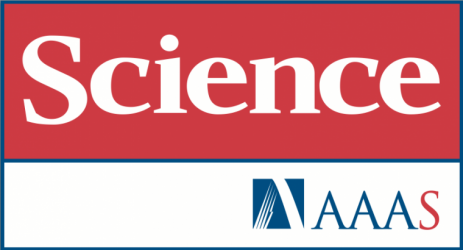Dr. Mansouri’s Letter in Defense of Iranian Scientific Community in Science Magazine
Doctor Reza Mansouri, Head of the Saeedi Institute for Advanced Studies, in defense of the dignity of the Iranian scientific community and in response to reports of Richard Stone on plagiarism in Iran, published a letter in the latest issue of Science journal.

Doctor Reza Mansouri, Head of the Saeedi Institute for Advanced Studies, professor at Sharif University of Technology and University of Kashan, in defense of the dignity of the Iranian scientific community and in response to reports of Richard Stone on plagiarism in Iran, published a letter in the latest issue of Science journal, which is one of the most prestigious scientific journals in United States and in the world. The letter is as follows:
Iran’s science landscape in context
IN HIS IN-DEPTH News Story “In Iran, a shady market for papers flourishes” (16 September, p. 1197), R. Stone reports on the sale of plagiarized papers among Iran’s scientists. This issue must be interpreted in context; Iran’s fledgling science community (1) should not be judged as if it is a well-established scientific community in a scientifically advanced country.
The revolutionary Iran came into existence with some 26 universities and 175,000 students in 1979 (2), when the country’s published papers totaled less than 400 (3,4). For the first two decades after revolution, Iran’s scientists were mainly engaged with establishing the necessary scientific and technological infrastructure. Twenty years after the revolution, the number of papers published by Iranian scientists was still not much more than 1000 (3, 4).
In 2000, when the number of publications began to increase dramatically (3, 5), Iran’s scientists and the science policy-makers started to become cautious about the output of the research done by our scientists. In the relatively short time that Iran has increased its published science output, its number of established institutions and students, and every other aspect of science activity, we have not been successful enough in establishing a scientific community with an innate code
of ethics (“Creating a culture of ethics in Iran,” M. S. Rezaee-Zavareh et al., Letters, 21 October, p. 296). Many of Iran’s university faculty are not even aware of what is and is not allowed in the scientific community. The time scale of structural change in the scientific sphere of the country has been too short and its acceleration too high to develop the necessary scientific “soft infrastructure.”
It was just 2 years ago that the Ministry of Science, Research, and Technology of Iran asked our universities and research institutes to establish internal committees on science ethics (6). There is now a group of university faculty running a website about plagiarism called “Professors Against Plagiarism” (7). In the past 2 years, universities have started to address cases of plagiarism. Investigations are lengthy, and if a faculty member is found guilty, the results could include the termination of his or her contract.
There are likely many more cases of plagiarism within our scientific community, even more than already revealed by articles such as Stone’s story. I am confident that the growing scientific community of Iran will establish a strong community with a vibrant discourse and code of ethics to minimize this plagiarism in time (8). I urge the international community to help Iran’s efforts to establish a healthy scientific community for the sake of the region and the world.
Reza Mansouri,
Department of Physics, Sharif University of Technology, Tehran, 14588-89694, Iran and Saeedi
Institute for Advanced Studies, University of Kashan, Kashan, 87317-51167, Iran. Email: mansouri@ipm.ir
REFERENCES
1. F. Khosrokhavar, S. Etemad, M. Mehrabi, Critique Critical Middle Eastern Stud. 13, 209 (2004).
2. Center for Educational Planning,“Statistics of higher education in Iran,1978-79”(The Institute for Research and Planning in Science and Education,Tehran,1980) [in Persian].
3. R. Mansouri, Iran in 2025 (Tarrhe-no Publishing,Tehran, 2009) [in Persian].
4. M.Moin,M.Mahmoudi,N.Rezaei,Hakim Res.J.10, 8 (2007) [in Persian].
5. A. Coghlan,“Iran is top of the world in science growth,” New Scientist (28 March 2011).
6. Ministry of Science, Research, and Technology of Iran Directive (2014); www.msrt.ir/fa/rppc/Pages/Files/Research.aspx [inPersian].
7. Professors Against Plagiarism (http://pap.blog.ir/) [in Persian].
8. B.Ataie-Ashtiani, Science 351, 1273 (2016).


Your Comment :